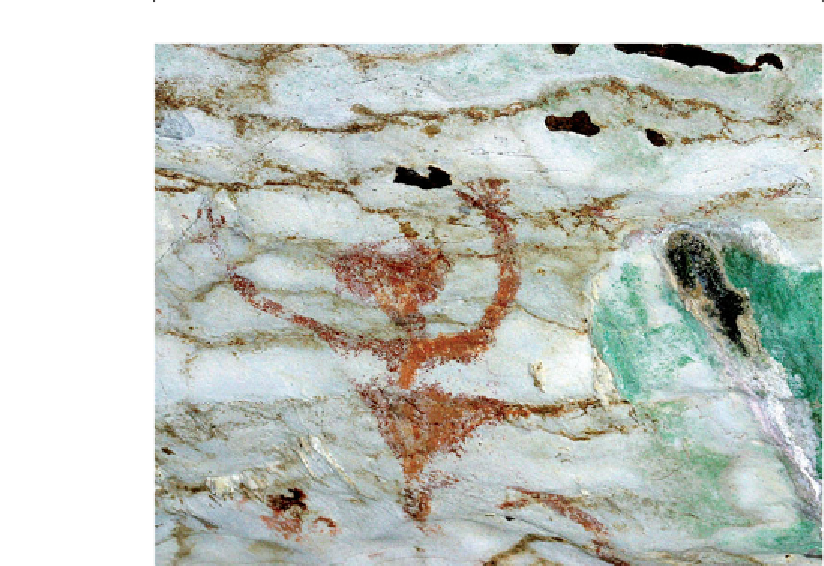Travel Reference
In-Depth Information
Figure 119
This graceful dancing woman was painted on a Niah Cave wall about 2,500
years ago. Humans have inhabited these caves for 40,000 years, but it is not known when they
fi rst began to paint the walls.
Southeast Asia they must have followed a route similar to that of the later
modern humans. Eventually they arrived on Java about 1.5 million years ago.
Astonishingly, it appears that
H. erectus
survived on Java for an enormous
span of time, down to almost the present day. Between 1994 and 1996, Berke-
ley geochronologist Carl Swisher and his colleagues were able to get accu-
rate dates of bovine teeth found in the same riverbank strata as the
H. erectus
bones, along with dates on bits of volcanic deposits trapped in the skullcaps
themselves. Their measurements yielded values ranging from more than 1.5
million years ago to as recently as 28,000 years ago.
9
If
H. erectus
really did survive on Java for all this time, longer than the
entire history of hominids in Europe, then it seems likely that they were still
there when modern humans fi rst arrived. Did
H. erectus
and modern humans
actually encounter each other on Java?


